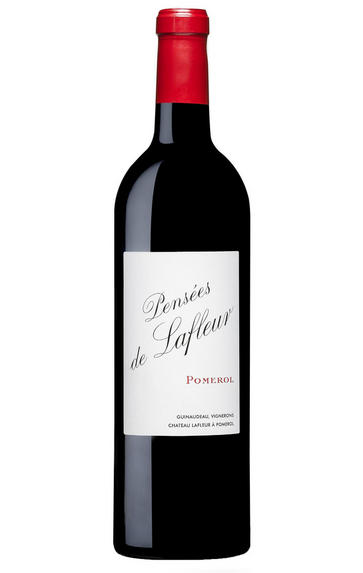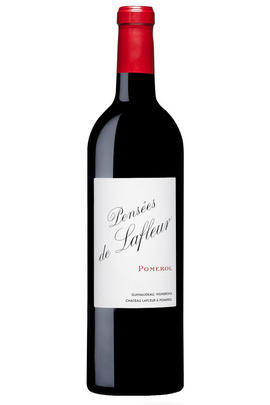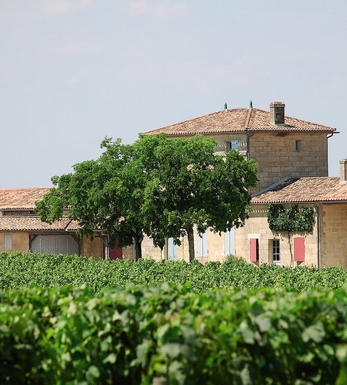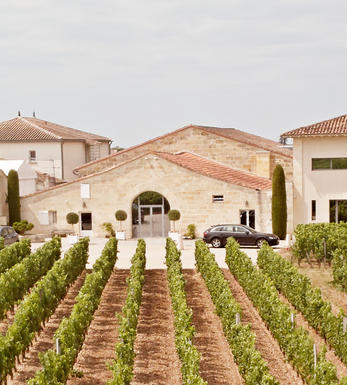
2012 Pensées de Lafleur, Pomerol, Bordeaux

Critics reviews
Robert M. Parker, Jr. - 25/04/2013
Julia Harding MW, jancisrobinson.com, 29 Apr 2013
Baptiste Guinaudeau, the young, tall proprietor of this tiny treasure on the Plateau of Pomerol, harvested his Merlot at a perfect moment, September 23, and finished with the Cabernet Franc on October 6, several days before a huge deluge inundated Bordeaux. He spoke of 46 straight days with no rain, which created hydric stress in parts of their vineyard. The final blend for the 2012 Lafleur was 54% Cabernet Franc and 46% Merlot. Yields were low, never having surpassed 40 hectoliters per hectare in over 30 years, even in abundant years such as 1990 and 1982.
Robert Parker - Wine Advocate - Apr 2013
About this WINE

Chateau Lafleur
Château Lafleur is A tiny 4.5-hectare Pomerol property located opposite Pétrus and producing wines of comparable quality. Lafleur is owned and run by Sylvie and Jacques Guinadeau. Its vineyards are situated on the gravel-rich Pomerol plateau and adjoin those of La Fleur-Pétrus. The soils here are particularly deep and are enriched by deposits of potassium and iron. Only natural fertilisers are used and yields are painfully low, even by Pomerol standards.
Lafleur's wine is typically a blend of Merlot (50%) and Cabernet Franc (50%). It is aged in small oak barrels (50% new) for 18 months. Wines from Lafleur display a spectacularly intense perfume (partly attributable to the high percentage of Cabernet Franc in the blend) and display layers and layers of concentrated, black fruits, minerals, tobacco spices and creamy liquorice on the palate. The best vintages can last for up to 50 years.

Pomerol
Pomerol is the smallest of Bordeaux's major appellations, with about 150 producers and approximately 740 hectares of vineyards. It is home to many bijou domaines, many of which produce little more than 1,000 cases per annum.
Both the topography and architecture of the region is unremarkable, but the style of the wines is most individual. The finest vineyards are planted on a seam of rich clay which extends across the gently-elevated plateau of Pomerol, which runs from the north-eastern boundary of St Emilion. On the sides of the plateau, the soil becomes sandier and the wines lighter.
There is one satellite region to the immediate north, Lalande-de-Pomerol whose wines are stylistically very similar, if sometimes lacking the finesse of its neighbour. There has never been a classification of Pomerol wines.
Recommended Châteaux : Ch. Pétrus, Vieux Ch. Certan, Le Pin, Ch. L’Eglise-Clinet, Ch. La Conseillante, Ch. L’Evangile, Ch. Lafleur, Trotanoy, Ch. Nenin, Ch. Beauregard, Ch. Feytit-Clinet, Le Gay.

Cabernet Sauvignon Blend
Cabernet Sauvignon lends itself particularly well in blends with Merlot. This is actually the archetypal Bordeaux blend, though in different proportions in the sub-regions and sometimes topped up with Cabernet Franc, Malbec, and Petit Verdot.
In the Médoc and Graves the percentage of Cabernet Sauvignon in the blend can range from 95% (Mouton-Rothschild) to as low as 40%. It is particularly suited to the dry, warm, free- draining, gravel-rich soils and is responsible for the redolent cassis characteristics as well as the depth of colour, tannic structure and pronounced acidity of Médoc wines. However 100% Cabernet Sauvignon wines can be slightly hollow-tasting in the middle palate and Merlot with its generous, fleshy fruit flavours acts as a perfect foil by filling in this cavity.
In St-Emilion and Pomerol, the blends are Merlot dominated as Cabernet Sauvignon can struggle to ripen there - when it is included, it adds structure and body to the wine. Sassicaia is the most famous Bordeaux blend in Italy and has spawned many imitations, whereby the blend is now firmly established in the New World and particularly in California and Australia.


Buying options
Add to wishlist
Description
Displaying a more floral edge than the Grand Vin with very pretty redcurrant and violet hints, this is a real crowd pleaser. The palate has a lovely delicacy and harmonious mouthfeel that glides its way to the finish. There is a sweeter, sappy edge that balances with the freshness and lift of the vintage. Enjoy this wine over the next five years.
Hong Kong Fine Wine Team
wine at a glance
Delivery and quality guarantee